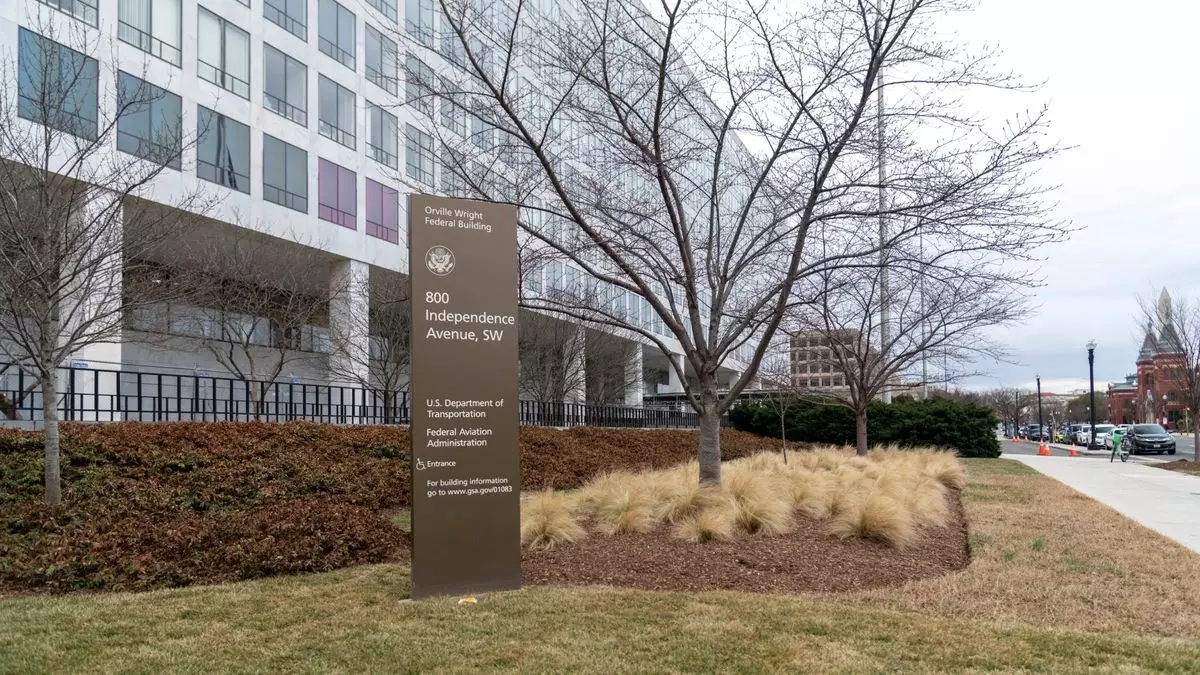The recent firing of several hundred Federal Aviation Administration (FAA) employees has ignited concerns regarding the implications for national security and aviation safety. This wave of dismissals, primarily targeting probationary employees, has raised questions not only about the management practices of the Trump administration but also about the critical roles these employees held in safeguarding the nation’s airspace.
On February 14, 2024, the FAA began terminating hundreds of its staff through late-night notifications, according to David Spero, the head of the Professional Aviation Safety Specialists union. The employees affected were primarily involved in operational roles such as maintaining radar systems and navigational aids. Transportation Secretary Sean Duffy later reported that fewer than 400 employees were laid off, asserting that none of the vital air traffic controllers or safety personnel were included in the cutbacks. However, this assertion is met with skepticism, particularly from those on the ground who directly understand the nuances of operational safety.
The fact that the communications regarding these layoffs were sent via a seemingly unofficial Microsoft email address raises alarms about the transparency and justification of these actions. Spero emphasized that the severances occurred without any documented cause or performance-related evaluation, suggesting a disorganized and potentially arbitrary decision-making process that could undermine morale across the FAA.
The National Air Traffic Controllers Association has stated that it is currently evaluating how these layoffs might impact overall aviation safety and the operational integrity of the national airspace system. While Secretary Duffy reassured the public about the retention of critical safety roles, the reality is that many of the employees who were terminated were involved in high-stakes programs, including an early-warning radar system designed for missile detection over Hawaii. Such systems are essential components of national defense, and the loss of expertise can cause significant disruption.
Charles Spitzer-Stadtlander, one of the terminated employees, emphasized the risks associated with losing personnel who possess specialized knowledge crucial for managing defense-related air traffic operations. The FAA’s involvement in the National Airspace System Defense Program highlights its critical role in national security. The abrupt dismissal of knowledgeable personnel in this domain raises valid concerns about the safeguarding of sensitive operations that protect against both aerial threats and potential invasions.
The personal account of Spitzer-Stadtlander sheds light on the human dimension behind these layoff statistics. After expressing his views on social media regarding key figures tied to the administration, he believes that he became a target for retaliation rather than being part of a generalized layoff aimed at streamlining workforces. This touches on deeper issues of political influence within governmental structures, where individual beliefs might lead to wrongful terminations, especially in high-stakes environments.
Spitzer-Stadtlander’s narrative also raises concerns about accountability in government actions. The anonymity of various Facebook accounts tied to the “Department of Government Efficiency” suggests a rogue operation that may be surveilling employees for political dissent, which is a departure from ethical management practices expected in a fair workplace.
The implications of the FAA layoffs extend beyond individual job losses, resonating with broader themes of governance, accountability, and public trust. The operational effectiveness of vital components such as air traffic control and national defense depends on a robust, knowledgeable workforce. As more details unfold regarding the backgrounds of those terminated, the need for a transparent and fair approach to government employment becomes increasingly critical.
Moving forward, it is essential for public agencies to cultivate environments that prioritize employee retention based on competency and safety imperatives, rather than political motives. Trust in government institutions can erode quickly when personnel decisions seem capricious or retaliatory. As stakeholders analyze the ramifications of these layoffs, they must advocate for a return to hiring practices that genuinely protect both national security and the interests of aviation safety in the United States.


Leave a Reply